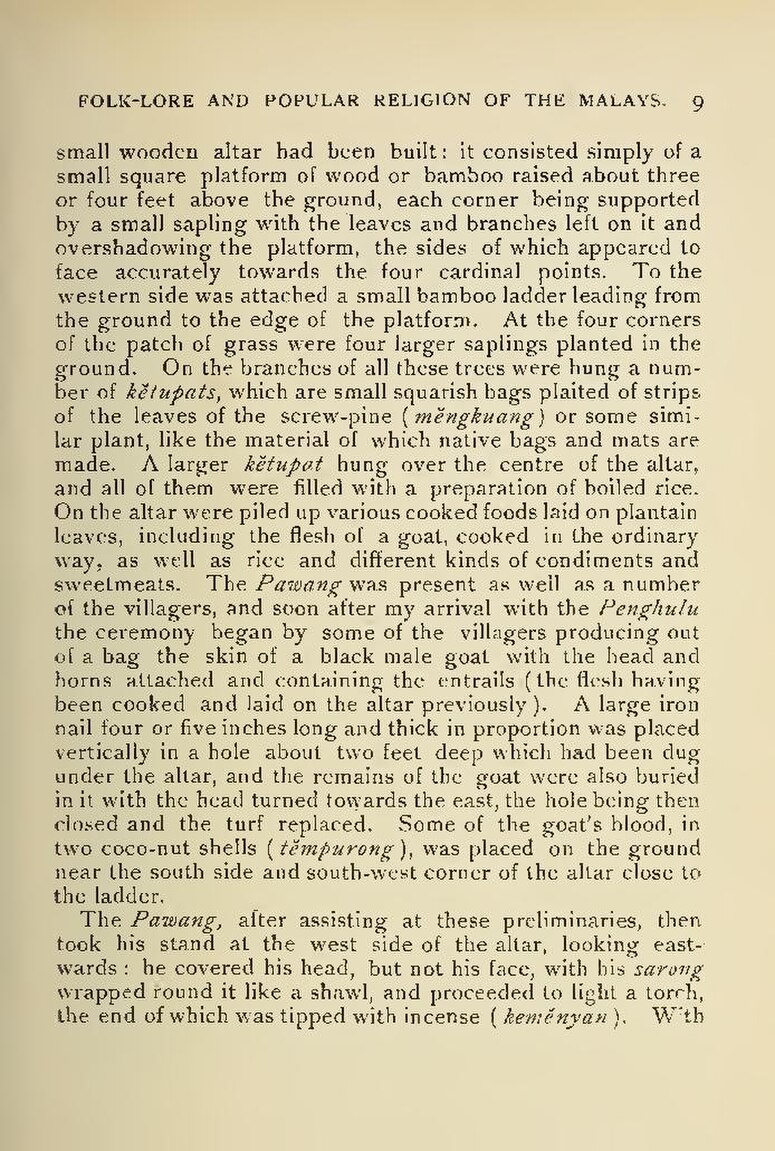small wooden altar had been built: it consisted simply of a small square platform of wood or bamboo raised about three or four feet above the ground, each corner being supported by a small sapling with the leaves and branches left on it and overshadowing the platform, the sides of which appeared to face accurately towards the four cardinal points. To the western side was attached a small bamboo ladder leading from the ground to the edge of the platform. At the four corners of the patch of grass were four larger saplings planted in the ground. On the branches of all these trees were hung a number of kĕtupats, which are small squarish bags plaited of strips of the leaves of the screw-pine (měngkuang) or some similar plant, like the material of which native bags and mats are made. A larger kĕtupat hung over the centre of the altar, and all of them were filled with a preparation of boiled rice. On the altar were piled up various cooked foods laid on plantain leaves, including the flesh of a goat, cooked in the ordinary way, as well as rice and different kinds of condiments and sweelmeats. The Pawang was present as well as a number of the villagers, and soon after my arrival with the Penghulu the ceremony began by some of the villagers producing out of a bag the skin of a black male goat with the head and horns attached and containing the entrails (the flesh having been cooked and laid on the altar previously). A large iron nail four or five inches long and thick in proportion was placed vertically in a hole about two feet deep which had been dug under the altar, and the remains of the goat were also buried in it with the head turned towards the east, the hole being then closed and the turf replaced. Some of the goat's blood, in two coco-nut shells (těmpurong), was placed on the ground near the south side and south-west corner of the altar close to the ladder.
The Pawang, after assisting at these preliminaries, then took his stand at the west side of the altar, looking eastwards he covered his head, but not his face, with his sarong wrapped round it like a shawl, and proceeded to light a torch, the end of which was tipped with incense (keměnyan). With
